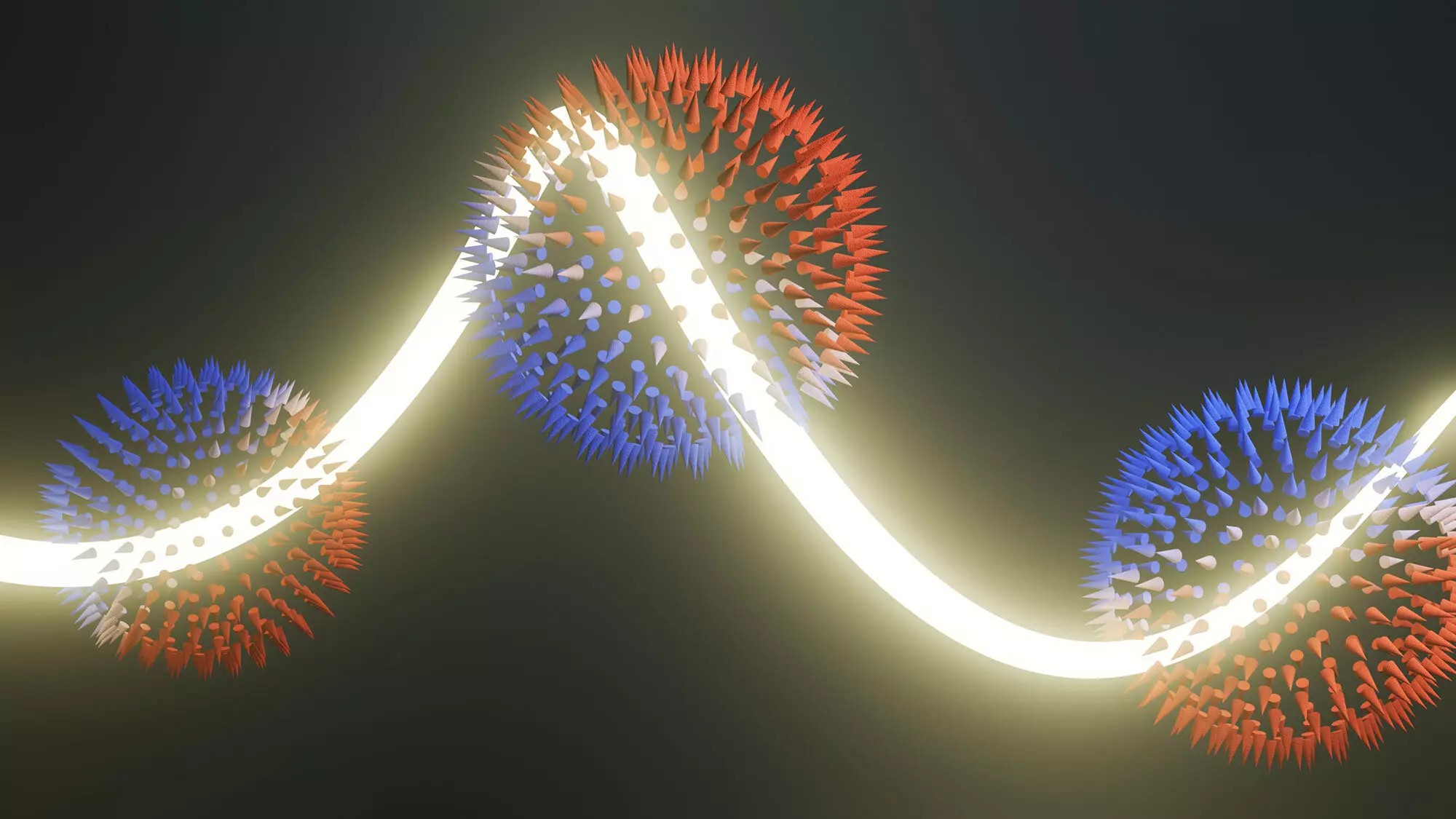In recent years, the arena of information technology has witnessed profound transformations, largely driven by the quest for more energy-efficient alternatives to standard electronics. One of the most promising developments in this quest is the exploration of **orbital angular momentum (OAM)** monopoles, which hold significant potential for the burgeoning field of orbitronics. This innovative sector seeks to harness a different property of electrons—specifically their orbital angles—to transfer information, potentially revolutionizing how data is processed and transferred in the digital age.
Traditional electronics predominantly relies on the *charge of electrons*. However, the emergence of alternative modalities, such as **spintronics**—which exploits the spin of electrons—has spurred interest in exploring other integral properties of electrons. Orbitronics represents this next wave of research, aiming to use the orbital dynamics of electrons around atomic nuclei, a concept that has been garnering attention for its promising applications in energy-efficient memory devices.
A major breakthrough on the pathway to fully leveraging OAM for practical technology comes from chiral topological semi-metals, an intriguing class of materials identified at the Paul Scherrer Institute (PSI) in 2019. Recent studies led by international researchers, including noteworthy contributions by scientists from PSI and the Max Planck Institutes, have highlighted these materials as ideal candidates for facilitating the creation of OAM currents. The distinct helical atomic structure of chiral topological semi-metals could naturally support the emergence of various OAM textures, helping to streamline the process of generating OAM flows without requiring external stimuli.
Researchers have previously explored traditional materials like titanium, which have shown some potential in OAM applications; however, the unique properties of chiral topological semi-metals distinguish them. As explained by *Michael Schüler*, a highly regarded physicist, these materials possess intrinsic OAM characteristics that could lead to stable and efficient current generation without needing elaborate setups or conditions. With these advantages, they may soon play a critical role in the next generation of information processing technologies.
The Allure and Challenges of OAM Monopoles
Among the various properties exhibited by chiral topological semi-metals, OAM monopoles capture particular interest due to their unique isotropic characteristics. These monopoles function like the points of a hedgehog, radiating in all directions; this isotropic behavior opens new avenues for generating diverse flows of OAM. The realization of such monopole systems, however, was initially confined to theoretical constructs, posing significant challenges for experimental verification.
A promising technique, known as *Circular Dichroism in Angle-Resolved Photoemission Spectroscopy* (CD-ARPES), laid the groundwork for probing these elusive OAM monopoles. This sophisticated method employs circularly polarized X-rays to stimulate a material, ejecting electrons whose angles and energies reveal vital information regarding the material’s electronic structure. However, a notable impediment existed between theoretical predictions and experimental capabilities, often obscuring the identification of OAM monopoles in collected data.
Facing considerable challenges, the research team, led by Michael Schüler, undertook comprehensive data analysis to bridge the disconnect between theory and experimental findings. Through rigorous theoretical groundwork, they scrutinized two distinct types of chiral topological semi-metals—those composed of palladium and gallium, along with platinum and gallium. By methodically varying photon energies during experiments, they uncovered a series of complex signals that ultimately revealed the presence of OAM monopoles.
Their findings debunked earlier assumptions about the simplicity of measuring OAM via CD-ARPES, demonstrating a more intricate relationship where the signals rotated around some monopoles as experimental conditions changed. Such revelations allowed the team to accurately capture the nature of OAM monopoles and their potential directionalities—an essential factor when considering practical applications in orbitronics.
The experimental validation of OAM monopoles paves the way for exciting future research opportunities in the field of orbitronics. The ability to manipulate the polarity and directionality of OAM currents could yield versatile components for new types of memory devices and data storage solutions, ultimately contributing to more sustainable technological practices. The fusion of rigorous theory with empirical experimentation not only solidifies the foundation for practical applications involving OAM monopoles but also inspires further investigation into a broad spectrum of materials.
As the scientific community continues to unravel the complexities surrounding OAM and its applications, orbitronics stands poised to redefine information technology as we know it, promising a future where energy-efficient processing can meet the ever-increasing demand for computing power without the environmental toll of traditional electronics. The theoretical ambitions have taken tangible form, marking the end of mere speculation and the dawn of a new era in information processing.


Leave a Reply